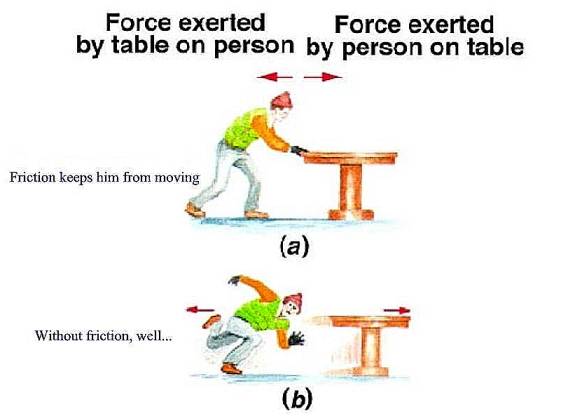
A Force is a push or a pull on an object.
The symbol for force is F; SI unit is the Newton, N.
One Newton is defined as the force necessary to cause a one-kilogram mass
to accelerate at the rate of 1 m/s2.
1 N = 1 kg m/s2
Newton’s first Law: Unless an outside force is acting on in, an object at rest remains at rest, and an object in motion remains in motion. The at rest part is kind of obvious, my pencil does not suddenly fly across my desk unless I push it. If I push my coffee cup across the table it comes to a stop, why? The force acting on it is the force of friction.
Newton’s
Second Law: An unbalanced force
(or net force) causes an object to accelerate; this acceleration is directly
proportional to the unbalanced force and inversely proportional to the
object’s mass; called the law of acceleration
a = F / m or F = m a
Inertia: a measure of how an object resists changes in motion; it is a measure of an object’s mass.
Newton’s Third Law – When one object exerts a force on another object, the second object exerts a force on the first object that is equal in magnitude, but opposite in direction; for every action, there is an equal, but opposite reaction; called the law of action-reaction. In the following case, if you push a table, what keeps you from moving? It is the friction force acting against the table pushing back on you. The friction comes from the rubber on your shoes. If you wear socks or are standing on ice, you lose a lot of friction and it may be that you are what moves!
